How is lilac pruning carried out?
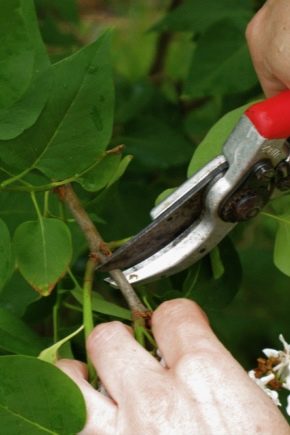
Lilac is one of the favorite shrubs of the peoples of Russia, decorating the landscape of almost every garden plot with its beauty. Lush, fragrant bloom and heady aroma are the main features of this shrub. But in order for lilac bushes to be a truly gorgeous sight for a long time, it is necessary to provide the plants with proper care. One of the elements of agricultural technology is pruning.
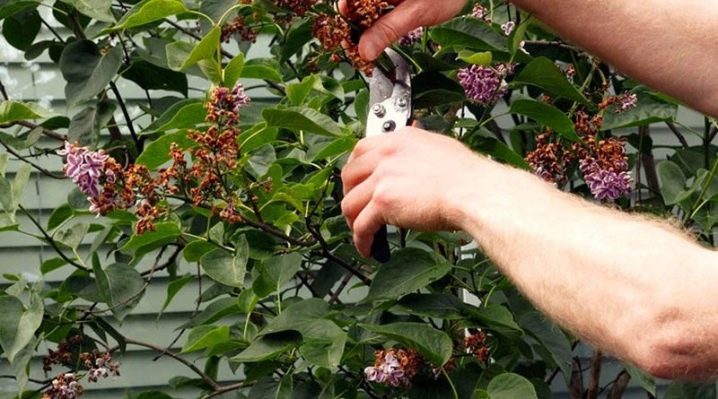
Types of trimming
The state of vegetative processes inside the plant is negatively reflected by the presence of dry shoots, excessive growth, wilted inflorescences, layering, since the root system will not cope with the full development of inflorescences and with the nutrition of the entire bush.
For the recovery and formation of the crown of the bushes, an annual, rejuvenating, thinning and forming pruning of lilac is used. Its purpose is to form a beautiful, healthy bush for an abundant, lush flowering.

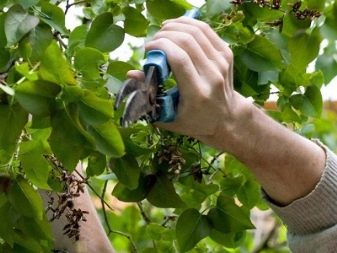
Annual
Annual pruning of lilac bushes is carried out mainly for sanitary purposes. Every year in the fall, you need to carefully examine the bushes and cut off all the curves growing inside the bush, broken shoots affected by lichen. It is better not to do this kind of revision of the bushes in the spring, so as not to damage the flower buds. Shrubs cut in the fall will be well prepared for the winter season. Many gardeners choose the fall annual pruning. But the fall deadline for annual pruning is a controversial statement.
This procedure can be done in early spring, when the sap has not yet begun to move in the plants.
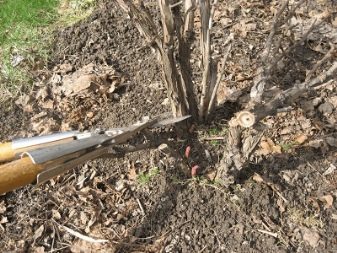
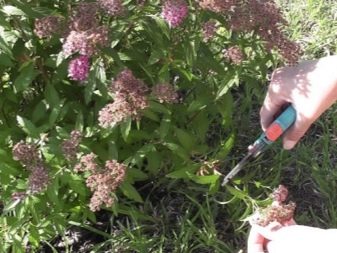
Rejuvenating
Old lilac bushes over 10 years old, even with proper care, become ugly, lose their shape, and bloom poorly. Such bushes undergo anti-aging pruning. All the branches that are on the plant are pruned so that their height from the ground surface is no more than 40 cm.As a result, only hemp will remain in the place of the bush. Naturally, in the next year or two, such a bush will not bloom. At first, the bush looks very unsightly, but do not regret it: it is successfully restored in 2-3 years.
Competently carried out anti-aging pruning is a guarantee of preserving a beautiful bush and its luxurious flowering.
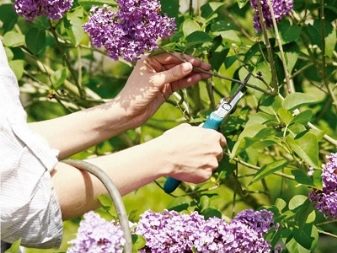

Thinning
Young lilac bushes do not need pruning only for the first two years after planting. They grow very quickly, so you constantly need to monitor the density of the crown and the shape of the bushes so that they do not turn into untidy thickets. When thinning, one should not forget that no more than 1/3 of all branches can be removed, while observing the optimal ratio of young and woody branches, on which flower buds are formed, so that later young shoots will replace old ones. Thinning pruning allows you to prevent unnecessary thickening of the crown by removing lateral shoots and cuttings.
Indomitable root shoots are cut completely flush with the ground.
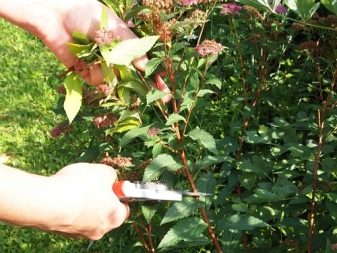
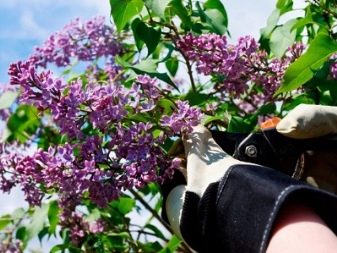
Formative
This is the most important type of pruning. The method and scheme of formative pruning depends on what result is supposed to be obtained: a bush or a stem (tree), therefore, it is necessary to decide on the choice before the pruning date. The formation of a bush begins 2-3 years after planting. The bush becomes finally formed in a few years.
A uniform spherical bush is formed according to the classical pattern. At the first pruning of a young bush for the first time, 3-4 of the strongest shoots are left, strictly observing that the direction of the skeletal branches is in different directions from the center: only in this way the shape of the bush will be expectedly correct. If two skeletal branches are very close and grow in the same direction, you must immediately get rid of one of them, leaving the stronger one. Crossed and interfering shoots must also be removed.
All branches left after the first pruning are shortened by almost half, trying as much as possible to leave them approximately the same length in order to ensure the formation of a lush and even bush.

In the second year of formation, the skeletal branches need to be shortened again, and the strongest ones should be left from the side branches. In the third year, they do the same as in the second. In subsequent years, the formation of the crown is carefully monitored and, if necessary, appropriate measures are taken in a timely manner to adjust.
The lilac on the trunk is a neat well-groomed tree. The formation of such a crown is not an easy process, so novice gardeners rarely choose it for fear of not coping. At the first pruning (in the third year after planting), all branches are completely cut from the bottom so that the main trunk is free. During the season, all newly growing shoots must also be removed from this trunk. In the first two years, you will have to fight against the emerging shoots and cut out all runs growing inside the trunk. In the fourth year, the height of the trunk is already sufficient. To stop the growth of the tree in height, pinch the tops of the bush. The bush will begin to grow on the sides and become wider and more lush. Such a shrub will look beautiful in various landscape compositions: along the path, on the lawn, in the flower bed.
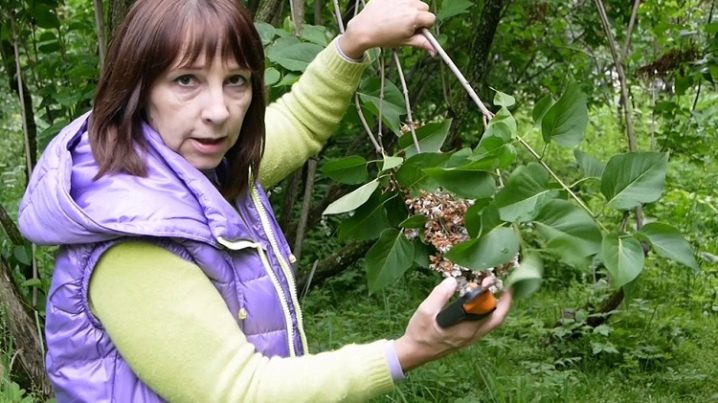
Required tools
When thinning lilac bushes, cutting flowers into bouquets and removing faded inflorescences, in no case should you break off branches and old flower stalks without the use of tools, since broken wood is restored with difficulty, moisture gets into the crevice and the branch begins to rot. Pruning must be done with ordinary garden tools:
- pruning shears (for thin branches);
- garden hacksaw (for thick trunks);


- lopper (for cutting off knots);
- garden shears (for cutting inflorescences).

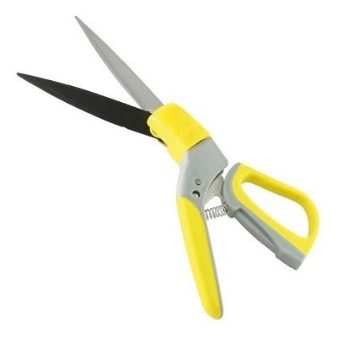
The main condition is that the instruments must be safe, sharp and sterile clean., so that during gardening work not to infect the bushes with plant infections and not to introduce pest larvae. Always have gloves and string on hand. Places of cuts need to be treated with garden varnish or resin, and you can also use oil paint, drying oil or brilliant green.


How to exercise correctly?
The sight of overgrown unhealthy shrubs in the landscape composition is an unsightly picture. In addition, they pose a threat to the comfortable existence of other plantings on the site. When choosing a pruning method, you should take into account the season, the age of the shrub and in what condition it is. It is advisable to carry out all measures for pruning lilacs in cloudy weather in order to avoid sunburn of cut shoots. There are certain schemes and rules that, if observed, will allow the lilac bushes to be healthy and highly decorative for a long time.
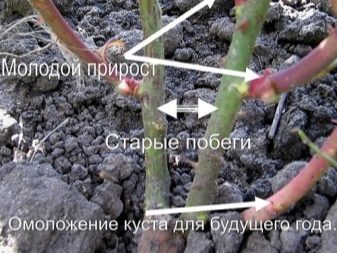
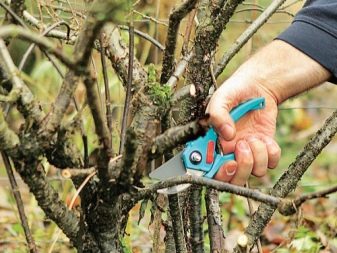
In the spring
Spring is the best time to prune. When examining lilac bushes in the spring, it is easier to diagnose their condition, since with a thorough examination it is easier to detect all sick weak branches. Usually they are thin and brittle, leaves bloom on them with a delay. Inflorescences on such shoots are unlikely to form, but the plant will have to spend nutrients to maintain them. In spring, pruning can be done before flowering and after flowering.
Early spring pruning before flowering (late March - early April) stimulates the growth of lateral shoots. First, you need to remove all branches with any defects: damaged, broken, frozen, twisted. Then you need to get rid of old deformed branches with blackened bark, lichens and bare sections of the trunk. Last year's young shoots also need to be examined and those that grow in the center of the bush should be removed. Light does not reach them in the required amount, they do not have enough space for normal development, they receive little nutrients, they thicken the crown and overload the bush. At this stage, it is possible, if not done in the fall, to carry out a formative pruning of the crown, but it should be remembered that during this period it is impossible to shorten the upper parts of the branches on which the flower buds are located.
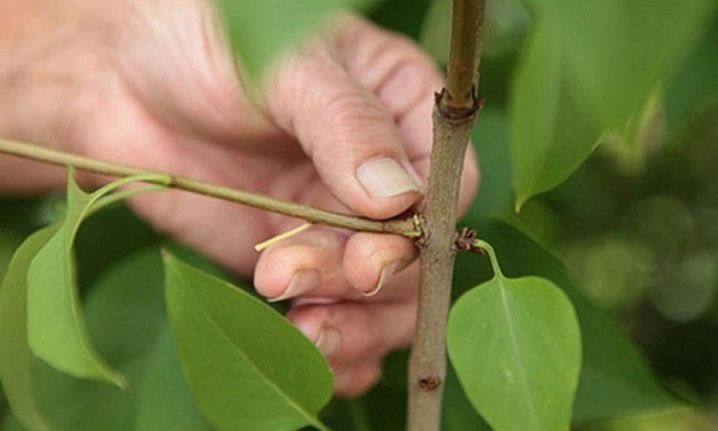
Spring pruning of lilacs after flowering (late May - mid June) is carried out in order to remove faded inflorescences. This should be done as soon as possible after flowering is complete. If the dried inflorescences are not removed from the bushes in time, the plant will begin to form fruits and seeds, spending a lot of energy on this process, which is necessary for the formation of flower buds. In this case, it will be impossible to wait for highly decorative flowering in the next season, it will turn out to be defective and weak. If several types of lilacs are grown on the site, then gardeners adhere to the rule: first, they cut the brushes from the bushes of ordinary varieties, then from semi-double ones, then from terry ones. Old brushes are cut with garden shears or a light pruner at the point where the green part of the brush ends above the first pair of leaves or shoot buds. With the timely implementation of these simple moments of care, the lilac will bloom profusely in the next season.
If necessary, in the spring after flowering, you can slightly correct the crown in accordance with the already selected type (bush or stem), shorten overgrown branches, remove excessive thickening of the bush.

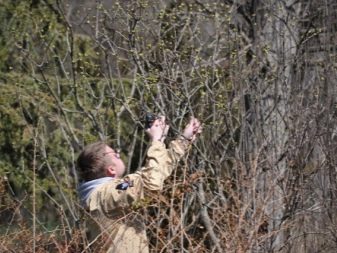
In autumn
In the autumn, you can carry out a formative or rejuvenating pruning of lilacs. Autumn pruning of lilacs must be carried out with extreme caution so as not to accidentally remove shoots with buds along with defective branches. Novice gardeners usually transfer this pruning to early spring. You need to start garden pruning work in dry, cloudy weather. This work should be done about a month before the onset of stable frosts.
Regarding the timing of pruning lilacs - spring or autumn - there are no unequivocal recommendations. Gardeners are guided by various criteria when choosing: the climatic conditions of the growing zone, the state of the plantings on the site, personal experience, and their own time capabilities.
The success of pruning mainly depends on its feasibility at the moment and on the accuracy of adherence to the basic methods, rules and recommendations for its implementation.

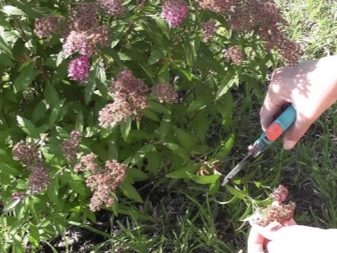
Follow-up care
Any pruning of bushes, even minor sanitary cleaning, is a traumatic interference with the vegetative system of the plant. For its successful recovery, you must follow simple rules of care:
- shallowly (about 10 cm) loosen the soil around the bush;
- apply potassium-phosphorus fertilizers;
- sprinkle the near-stem zone with sawdust or peat for better aeration of the roots and preservation of moisture.
The decorative appearance of trees, flowers and shrubs is a visiting card of the landscape design of each site. Only with the correct pruning technique, lilac bushes will last a long time and will delight the owner of the plot with a gorgeous fragrant look.
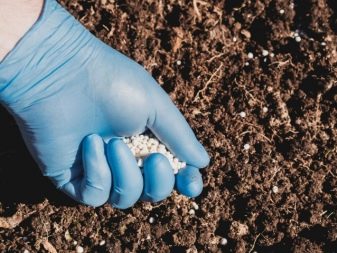
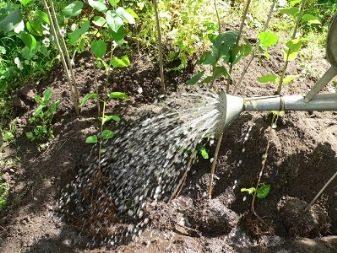
The secrets of the abundant flowering of lilacs in the video below.






























































The comment was sent successfully.